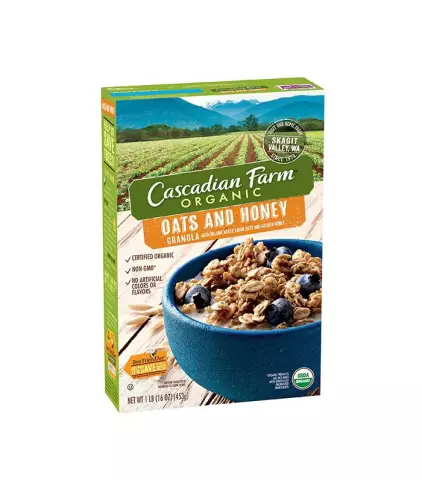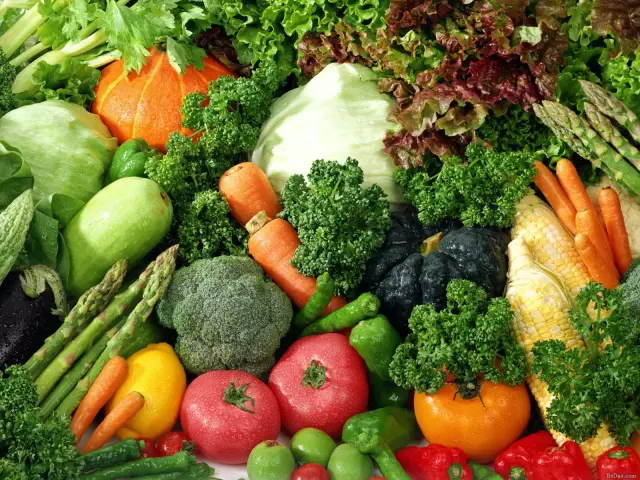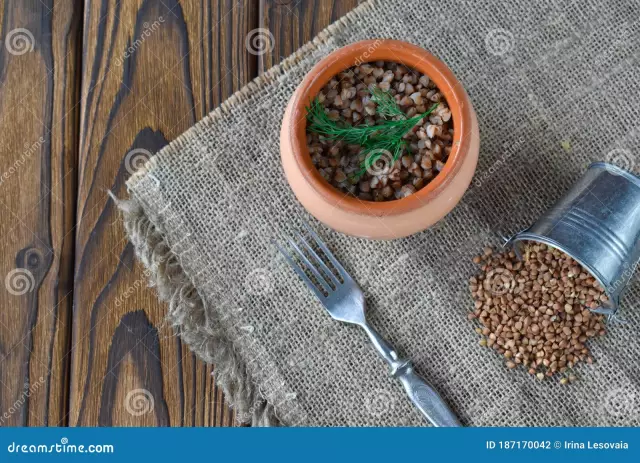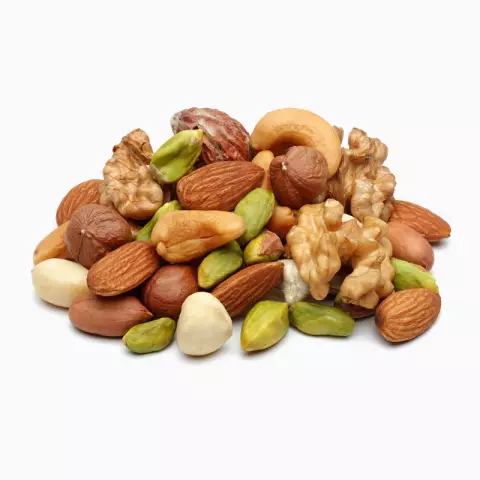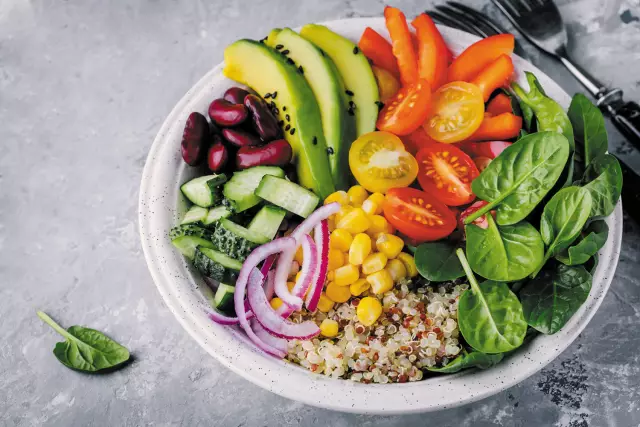- Author Rachel Wainwright [email protected].
- Public 2023-12-15 07:39.
- Last modified 2025-11-02 20:14.
14 rare but very healthy cereals
We have all heard about the benefits of cereal dishes. They contain fiber necessary for digestion and are rich in trace elements. Boiled cereals are part of salads, used as side dishes, bases for cereals, casseroles and puddings. It is not for nothing that cereal dishes have long been included in the daily diet of Russians: they helped to easily endure the difficulties of a cold climate, to successfully perform hard work. Children, accustomed to porridge from infancy, grew up strong and energetic.
Ancient sources mention "Suvorov porridge". According to legend, this dish was first cooked in one of the military campaigns, when the great commander, in order to support the forces of his soldiers, ordered to cook porridge from a mixture of different cereals. Connoisseurs highly appreciated not only the nutritional value, but also the peculiar taste of the dish, which has gained wide popularity.
Unfortunately, most people now use a limited selection of cereals. Rice, buckwheat and rolled oats are traditional on the tables of Russians, millet and semolina appear less often. The rest of the list of useful cereals does not attract the attention of housewives.
Cereals deserve more attention than modern people with their constant haste and spoiled taste give them. Today we will try to correct this annoying omission by acquainting readers with the properties of a number of cereals that are rare for us.
Amaranth
Amaranth came to us from South America. At the moment, many varieties of it have been bred with beautiful leaves and flowers. Many summer residents grow it as an ornamental plant, not knowing that its seeds are a valuable food product: they boil cereals in water (salted or sweetened) from amaranth seeds and make flour.
The seeds contain essential amino acids, as well as compounds of phosphorus, calcium, potassium, magnesium and iron. The product is recommended to be included in the diet of patients suffering from disorders of the nervous system and osteoarticular pathologies. Amaranth is also useful for pregnant women. It contains squalene, which slows down the aging process.

Source: depositphotos.com
Arnovka
It is made from grains of spring wheat. Groats are rich in minerals, vitamins and unsaturated fats. Its regular use helps to activate the body's defenses, slow down its aging, improve the functioning of the cardiovascular system and the brain.
Coarsely ground arnovka porridge is cooked for about half an hour. For faster cooking, it is recommended to pre-soak cereals. Small arnovka is used for casseroles and cutlets; it, like semolina, can be used as the main component of baking mixes.

Source: depositphotos.com
Bulgur
Bulgur is also obtained from wheat grains, but in this case, the feedstock is steamed and dried before crushing. As a result, the cereal acquires that specific taste for which the inhabitants of the Mediterranean coast, India and the Middle East love it so much.
The most useful bulgur is made from unpolished grains, which have preserved their outer shell. This cereal is brown in color. It contains a lot of fatty acids, fiber, saccharides and ash substances. Whole grain bulgur is considered a source of B vitamins, vitamins A, K, E, and important trace elements such as selenium, manganese, zinc, copper, iron and phosphorus. Regular consumption of bulgur improves complexion and hair condition, strengthens the nervous system and normalizes metabolism.
Bulgur is most often used as a side dish, a base for salads and pilaf, a dressing for soups. Finely ground groats are used to make casseroles and flat cakes. To make a crumbly porridge, the bulgur is soaked for a short time before cooking to properly swell the gluten.

Source: depositphotos.com
Kamut (wild wheat)
Kamut came to us literally from time immemorial. The plant began to be cultivated in the 40s of the XX century, taking as a basis the grains of ancient wheat, found by archaeologists in Egyptian burials. It turned out that the seeds were surprisingly well preserved, and the cereal was revived.
Outwardly, kamut grains resemble modern wheat, but are almost three times their size. They contain a large amount of amino acids, lipids and mineral salts, rich in vitamin E, magnesium and zinc.
Kamut porridges have a pleasant nutty flavor. They go well with vegetables, dried fruits and mushrooms. Kamut is quickly boiled down. Flour made from it is suitable for making baked goods, crackers, flakes and pasta.

Source: depositphotos.com
Quinoa
This plant has been cultivated on the slopes of the Andes since the time of the ancient Incas. Its seeds contain proteins similar in amino acid composition to milk. Quinoa is almost as good as fish in terms of phosphorus, calcium and iron. This is why cereals are recommended for people who adhere to the principles of strict vegetarianism.
Quinoa is suitable as a side dish and as a base for soups and salads. The cereals are usually boiled in water for 15-20 minutes.

Source: depositphotos.com
Corn grits
It is not for nothing that ground corn dishes are incredibly popular among the peoples of the Mediterranean and the Caucasus. Corn grits and flour:
- retain all useful properties during heat treatment;
- practically do not cause allergic reactions;
- help to remove toxic substances and radionuclides from the body;
- contribute to the normalization of blood cholesterol levels;
- contain most of the vitamins and minerals necessary for the body.
Coarse corn is used to prepare porridge in milk or water. Flour is used for dishes such as Caucasian or Moldavian hominy and Italian polenta. It also makes delicious pancakes and pancakes. The addition of cornmeal to baking mixes gives the baked goods a light, yellow color.

Source: depositphotos.com
Couscous
In ancient times, couscous was made from millet, but now it is made from durum wheat. This cereal is especially popular in the countries of the East, where it is used to prepare many dishes.
Couscous is extremely rich in copper compounds. As a result of its use, the aging process slows down, the condition of the hair improves, the work of the hematopoietic organs is activated, the digestion process is normalized, and problems with the joints disappear. Vitamin B5 in cereals helps to cope with fatigue and sleep disturbances. Couscous is considered a dietary food for weight loss.
It is recommended to steam couscous: when boiled in water, it quickly turns into a sticky, unappetizing mass. You can make porridge from couscous by simply steaming the cereal in hot water (without boiling). In addition, the product is added to flour mixtures for baking and cooking casseroles.

Source: depositphotos.com
Spelled
Spelled is another relative of modern wheat that has been used for centuries. The nutritional qualities of spelled were highly appreciated by the ancient Romans. In Russia, milk porridge made from these grains was one of the most popular.
It contains more nutrients, vitamins and microelements than "ordinary" wheat. The inclusion of spelled in the daily diet helps to strengthen the immune system, normalize the concentration of sugar in the blood, maintain the health of the nervous, cardiovascular, reproductive, and digestive systems, and improve the functioning of the endocrine glands.
Milk porridge is boiled from spelled, a crumbly side dish and risotto are made. Flour is used in the preparation of desserts and sauces.

Source: depositphotos.com
Wheat groats
These are wheat grains, whole or crushed. Groats are rich in vitamins A, C, B6, B12, E and PP. Such a complex perfectly supports the health of the skin, hair and nails, and has a positive effect on the organs of vision. The use of wheat groats helps to strengthen the immune system and increases the overall tone of the body.
Whole grain "wheat" is used to make milk porridge or a side dish. The best way to cook it is to boil it over low heat for 20 minutes, followed by a half hour simmering in the oven. Crushed groats are used as a base for pies, casseroles and cutlets.

Source: depositphotos.com
Teff (dwarf millet)
Grain has been cultivated in African countries for several millennia. The plant is very hardy and drought tolerant. Its grains are rich in iron and healthy amino acids. Teff is a source of high quality protein, vitamin B1, zinc, magnesium, potassium, phosphorus and calcium. Groats do not contain gluten, which is important for people suffering from celiac disease (plant fiber intolerance).
Teff flour is good for making pancakes and baking. Whole grains can be used to make side dishes and milk porridge.

Source: depositphotos.com
Oatmeal
Tolokno is a flour made from pre-steamed and dried grains of barley or oats. Until the beginning of the 20th century, the product was extremely popular in Russia. It was produced in large quantities and even sent for export, but then it was undeservedly forgotten.
In addition to a complete set of nutrients, oatmeal contains lecithin, which has a beneficial effect on the nervous system, and bioflavonoids, which have a regenerating and antitumor effect. With the regular inclusion of this product in the diet, the blood composition normalizes, fatigue, symptoms of nervous exhaustion and sleep disturbances disappear.
Pork porridge is not boiled, but simply poured with hot water or milk for a few minutes. From flour mixed with sour milk with the addition of spices, tasty and healthy cookies are obtained.

Source: depositphotos.com
Frike (farik, freak)
Fricke is a cereal made from perhaps the most exotic process of processing wheat grains. They are harvested at the stage of milky ripeness and then smoked. Groats are made up of whole, green grains, but there are also crushed varieties. In the countries of the East, it has been produced and used in cooking since about the 13th century.
Frike has a low glycemic index, so cereals are recommended to be included in the diet of patients suffering from diabetes mellitus and prone to being overweight. The product has prebiotic properties, which is especially valuable for people with bowel dysfunction.
Whole-grain frike porridge requires a long cooking time. They taste like tender meat, have an attractive aroma, and go well with vegetables.
Chumiza (capitate millet)
Plague came to our country at the beginning of the 20th century, after the Russo-Japanese War, but in the countries of East Asia this cereal has been cultivated for a long time. Groats are rich in fiber, carotene, vitamins B1 and B2, phosphorus, sulfur, magnesium and silicon. Eating chumiza dishes helps fight fatigue and depression, improve memory and vision, and maintain healthy skin and hair. It is believed that the substances contained in it contribute to the elimination of toxins from the body and participate in the processes of cell regeneration.
Porridge is prepared from the chumiza grains, pouring hot water over them for several minutes. In Georgia, bread and porridge are made from the so-called "gomi" - a mixture of plague and corn flour.

Source: gularis.com
Yachka
Barley is made from unpolished barley grains. It is considered not only a useful food product, but also a healing agent that is widely used in folk medicine. Yachka contains a rich set of vitamins and minerals. It is recommended to regularly use it in case of disorders of the digestive system and metabolism. Liquid decoction of the yachka has anti-inflammatory, antispasmodic and tonic effect.
Soft and crumbly cereals are prepared from barley, as well as dressings for soups.

Source: depositphotos.com
YouTube video related to the article:

Maria Kulkes Medical journalist About the author
Education: First Moscow State Medical University named after I. M. Sechenov, specialty "General Medicine".
Found a mistake in the text? Select it and press Ctrl + Enter.

